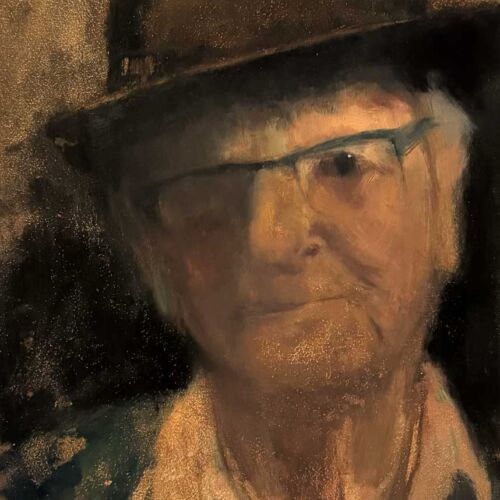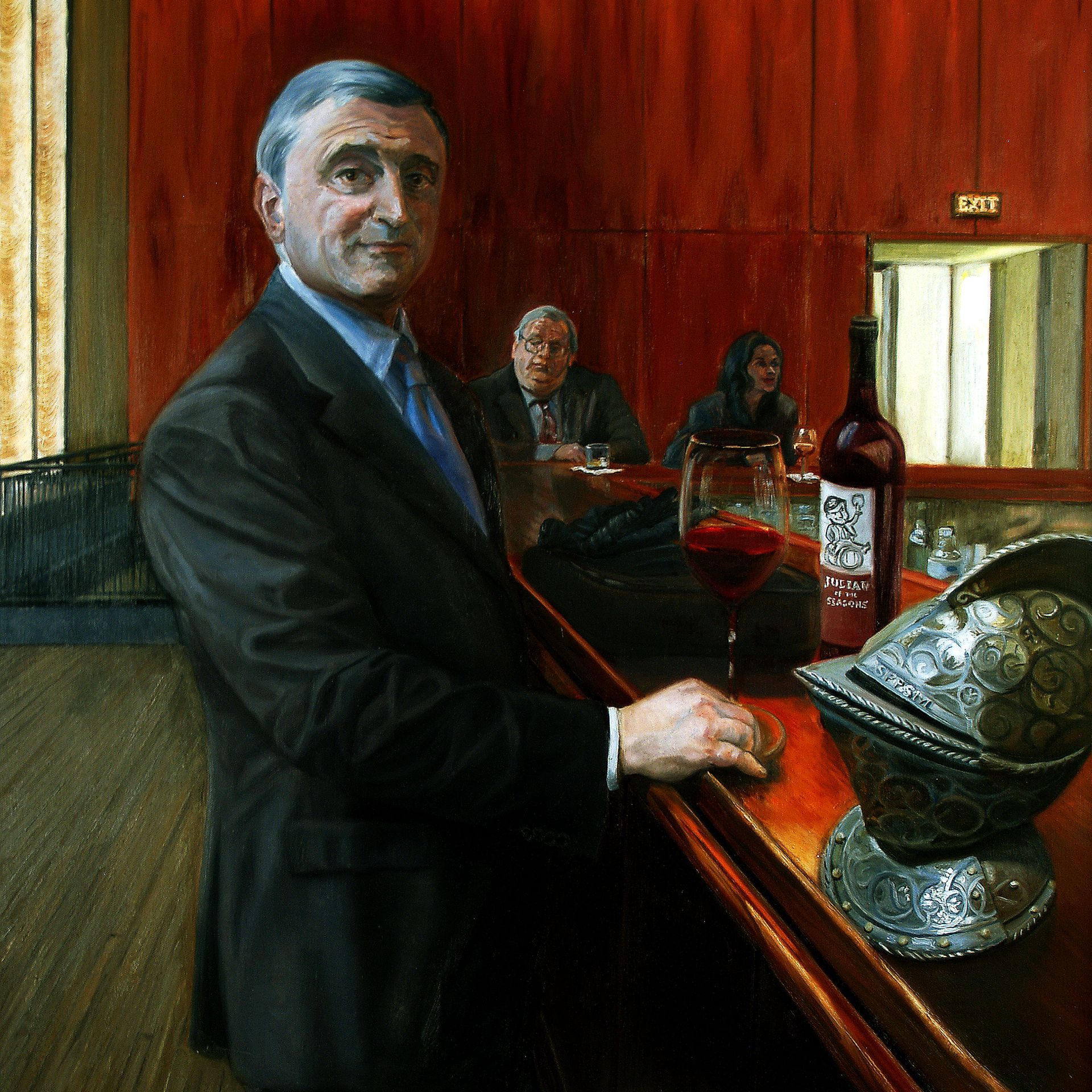Exploring the Depths of Feeling with Figurative Oil Painting Strategies
Exploring the Depths of Feeling with Figurative Oil Painting Strategies
Blog Article
The Development of Figurative Oil Paint: Recognizing Its Historical Significance and Modern Interpretations
The evolution of metaphorical oil painting offers as an engaging lens with which to examine the interaction between creative expression and historical context. Contemporary musicians, attracting from this abundant heritage, are now reinterpreting the human figure in means that challenge typical narratives.
Beginnings of Figurative Oil Paint
The origins of metaphorical oil paint can be mapped back to the early Renaissance in Europe, especially in the 15th century. The growth of oil paint permitted for greater depth of color and detail, improving the realistic look and vibrancy of their job.

In this transformative age, figures were usually illustrated within contextually rich environments, showcasing not just their physical qualities however also their mental states. Leaders such as Jan van Eyck and Titian took advantage of the medium's flexibility, employing layering strategies to accomplish luminosity and texture. This technology promoted the portrayal of intricate textiles and the nuances of skin tones, adding to the growth of portraiture and narrative scenes.
In Addition, the Renaissance emphasis on humanism cultivated an admiration for distinctiveness, which in turn affected artists to develop more relatable and vibrant numbers - figurative oil painting. Therefore, metaphorical oil painting arised as a powerful vehicle for storytelling and psychological interaction, laying the groundwork for future creative movements and styles
Trick Historical Activities
Considerable historical motions have actually shaped the advancement of figurative oil paint, each adding distinct ideologies and techniques that broadened the tool's possibilities. The Renaissance noted a turning point, stressing realism and the human type, with musicians like Leonardo da Vinci and Michelangelo pushing the limits of physiological precision and perspective. Following this, the Baroque age brought significant contrasts of light and shadow, exemplified by Caravaggio, that instilled religious styles with extreme emotionality.
The 19th century presented Romanticism and Realistic look, where artists such as Delacroix and Courbet challenged timeless perfects, focusing on private expression and daily life. The introduction of Impressionism better revolutionized the medium by stressing the results of light and color, causing a separation from traditional representation.
In the early 20th century, motions like Expressionism and Cubism redefined figurative painting with abstraction and the expedition of psychological depth. Each of these movements not only showed the societal modifications of their times however likewise prepared for modern analyses. The interaction in between these historic movements has created a rich tapestry of styles and philosophies, influencing modern artists in their pursuit of capturing the human experience on canvas.
Techniques and Products Advancement

Throughout the Baroque period, strategies such as chiaroscuro and sfumato emerged, improving the psychological vibration of metaphorical make-ups. Artists started to trying out glazes and impasto, adjusting structure and luminance. By the 19th century, advancements like making use of pre-mixed paints in tubes reinvented accessibility, enabling artists to paint en plein air and record the fleeting impacts of light.
The 20th century witnessed the introduction of artificial pigments and mediums, which broadened the scheme and altered the uniformity of oil paints. The exploration of new application strategies, such as palette knives and brushes of differing rigidity, further diversified creative expression. Jointly, these advancements show the advancing relationship between materials, strategies, and the imaginative vision inherent in figurative oil paint.

Contemporary Interpretations
Contemporary interpretations of figurative oil paint reflect a vibrant discussion in between practice and innovation, where artists challenge established standards and discover varied motifs. This advancement shows up in numerous methods, as modern artists blend classical techniques with modern concepts, typically attending to social, he said political, and personal Resources narratives.
Many practitioners attract ideas from historic works, yet they infuse their pieces with modern point of views, using the human form as a vehicle for discourse on culture, sex, and identity. Artists increasingly trying out abstraction, distortion, and blended media, which enables for a broader analysis of the figure and its context.
Moreover, using vibrant shade combinations and non-traditional make-ups commonly serves to interfere with standard viewing experiences, prompting vital engagement from target markets. This shift in emphasis extends past aesthetic appeals; it mirrors a growing recognition of the complexities of human experience in an interconnected globe.
As figurative oil paint remains to progress, it remains an essential medium for checking out the nuances of contemporary life, personifying both a respect for heritage and a dedication to dynamic thought. The outcome is a rich tapestry of expression that resonates with the intricacies of the modern human condition.
Influence On Modern Art
The impact of figurative oil paint on modern-day art is extensive, as it has constantly influenced a myriad of imaginative activities and practices throughout the 20th and 21st centuries. From Expressionism to Surrealism and past, the exploration of the human figure has stayed a main motif, allowing artists to convey complex emotions and narratives. This emphasis on figurative depiction has actually caused a re-examination of typical strategies, causing innovative approaches that blend realism with abstraction.
Moreover, contemporary artists have embraced figurative oil paint as a way to address social and political issues, making use of the tool to test assumptions of sex, culture, and identity. The revival of interest in figurative operate in current years shows a hoping for connection in a progressively digital globe, where human experience and feeling are vital.
Furthermore, the dialogue between metaphorical about his oil painting and modern art appears in the jobs of musicians such as Kehinde Wiley and Jenny Saville, who draw on historic recommendations while infusing their items with modern relevance. Ultimately, metaphorical oil painting continues to form and redefine contemporary artistic expression, emphasizing its enduring significance in the art globe.
Final Thought
The evolution of metaphorical oil paint underscores its historic importance and adaptability throughout various imaginative motions. From the naturalism of the Renaissance to the stirring expressions of the Baroque and the ingenious approaches of modernity, this tool has consistently transformed. Contemporary analyses reflect unconventional structures and vibrant shades, fostering important engagement with political and social themes. Eventually, metaphorical oil painting continues to be an important tool for exploring the human experience, resonating greatly in today's digital landscape.
The development of metaphorical oil paint serves as a compelling lens with which to check out the interaction between artistic expression and historical context.Considerable historic activities have shaped the evolution of figurative oil painting, each adding one-of-a-kind ideologies and techniques that expanded the medium's possibilities.As historical motions shaped the trajectory of metaphorical oil paint, the methods and products used by musicians have actually additionally undertaken substantial transformations. figurative oil painting.The impact of figurative oil paint on modern-day art is extensive, as it has actually consistently motivated a myriad of imaginative activities and techniques throughout the 21st and 20th centuries.The development of figurative oil painting underscores its historical significance and adaptability throughout numerous imaginative motions
Report this page